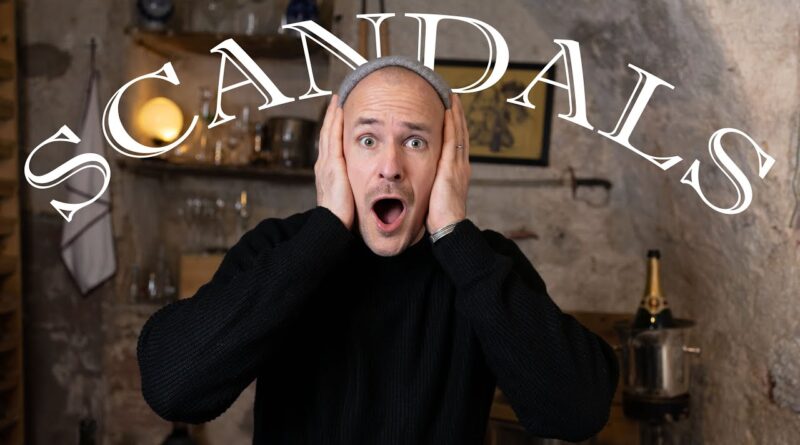WINE SCANDALS – Did you know these scandals that shook the wine world?
Support me on my PATREON: https://patreon.com/konstantinbaum
Follow me on …:
https://www.instagram.com/konstantinbaum_mw/
Check out my website:
https://baumselection.com/
Looking back at the history of wine you will find quite a few different scandals but I have selected three scandals that left an impression on the wine world. The first one is the so-called “antifreeze scandal”. It is easy to forget today that there was a time when producers in Northern Europe were struggling to ripen their grapes. Some crafty or rather criminal winemakers came up with the idea to add diethylene glycol to wine to make it taste sweet without having to go through the arduous of, you know, letting the grapes ripen.
Diethylene glycol is also used as antifreeze, and it can be poisonous in larger quantities but for the wineries, it was an easy way to increase profits.
This became common practice among a small number of wineries in Austria and some of these tainted wines were also sold in bulk to German bottlers.
They managed to keep it secret for a few years but the scandal unfolded, when one producer, who only own a small tractor, tried to claim large amounts of antifreeze as a business expense. The reaction in the media was extreme and the news went around the globe. The story made the front page of the New York Times. Glycol was the word of the year in 1985 in Germany.
Austrian wine was banned in several countries including the UK
The first time I saw a reference to this scandal was in the Simpsons episode “The Crepes of Wrath” when two French winemakers are arrested after putting antifreeze in wine and making poor Bart drink it.
As a result of all the unwanted attention exports of Austrian wine plummeted from 45 million liters a year to just 4.4m and also the reputation of German wines was tarnished.
The dangers of Diethylene glycol were exaggerated as the levels in most wines were generally too low to cause lethal results or even health risks
The highest level was 48 g/l in a bottle of Welschriesling Beerenauslese from Burgenland.
Another far more lethal scandal is widely unknown: in 1986 a winemaker in Italy mixed methanol into his wine. Twenty-three people died and more than 90 were hospitalized.
The positive side of this story is that the Austrian wine industry enacted strict wine laws and spend a great deal of effort in rebuilding its reputation.
Let’s move on to another scandal which was even turned into a book:
The Jefferson bottles.
This is one of the scandals that tells you a lot about the archaic way the wine trade sometimes operates.
Let’s start with a question: If a German music manager approached you and offered you some bottles of 1787 Chateau Lafite owned by Thomas Jefferson without disclosing his source, would you spend six figures Dollars for it?
The German music manager was Hardy Rodenstock and he became famous for locating the world’s rarest wines. He has hosted exclusive over-the-top wine tastings with wines from the best estates going back to the 18th century and some of the most famous wine tasters came from Jancis Robinson to Robert Parker.
He claimed that the bottles were discovered in Paris and that the inscription Laffite Th. J.” referred to Chateaux Lafite and Thomas Jefferson – Thomas Jefferson was a wine lover – so that part of the story makes sense but all the rest doesn’t really.
Experts from the Thomas Jefferson Foundation raised serious doubts about the authenticity of those bottles. And think about this: How many bottles in your collection have your initials engraved into them? Have you ever seen somebody do something like this?
The Forbes family did not care too much and they stored the bottle in terrible conditions so that at some point the shrunken cork dropped back into the bottle destroying whatever was left of the wine.
The story became more interesting when US businessman Bill Koch bought some of those bottles in 1988.
He filed a lawsuit in 2006 after realizing that he had been defrauded and spent millions of private investigators. What followed were different trials and all of the accused claimed they did not know.
After diving deep into the story it seems like Rodenstock had access to far too many great wines in large-format bottles.
Koch’s private investigator claimed that the bottles were probably old but the engraving suggesting that the wine was Lafite owned by Thomas Jefferson was added with a modern dentists drill – and la voila: The most expensive bottle of wine.
You might think that people learned from their mistakes and that the industry became more careful and less naïve … think again cause here comes the story of Dr. Conti himself: Rudy Kurniawan.

